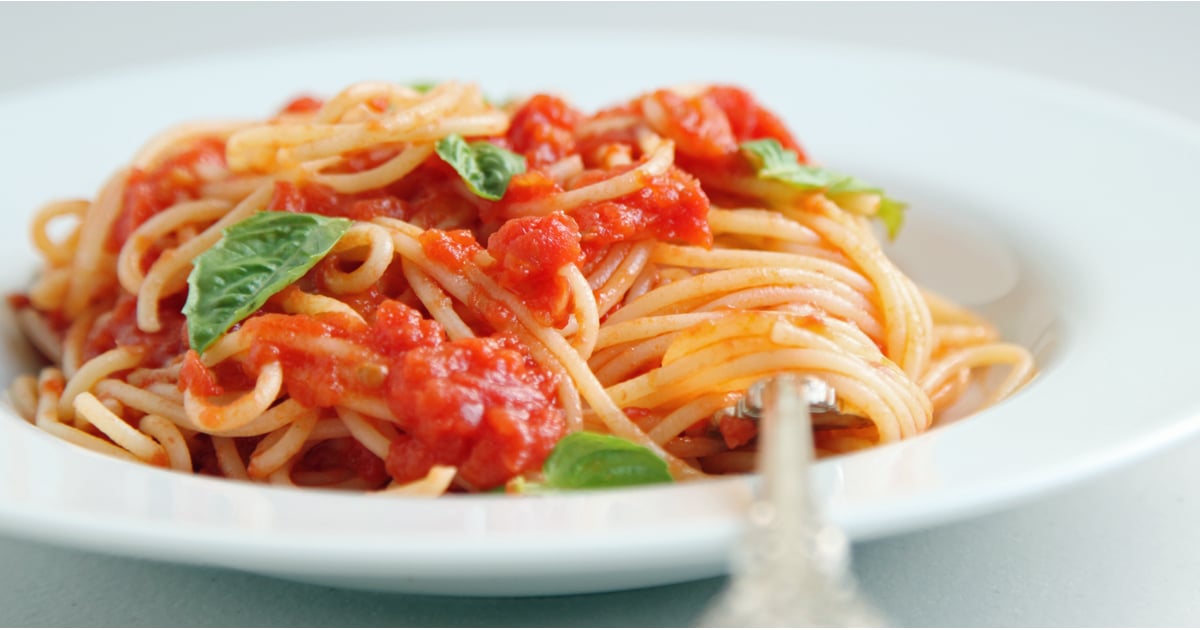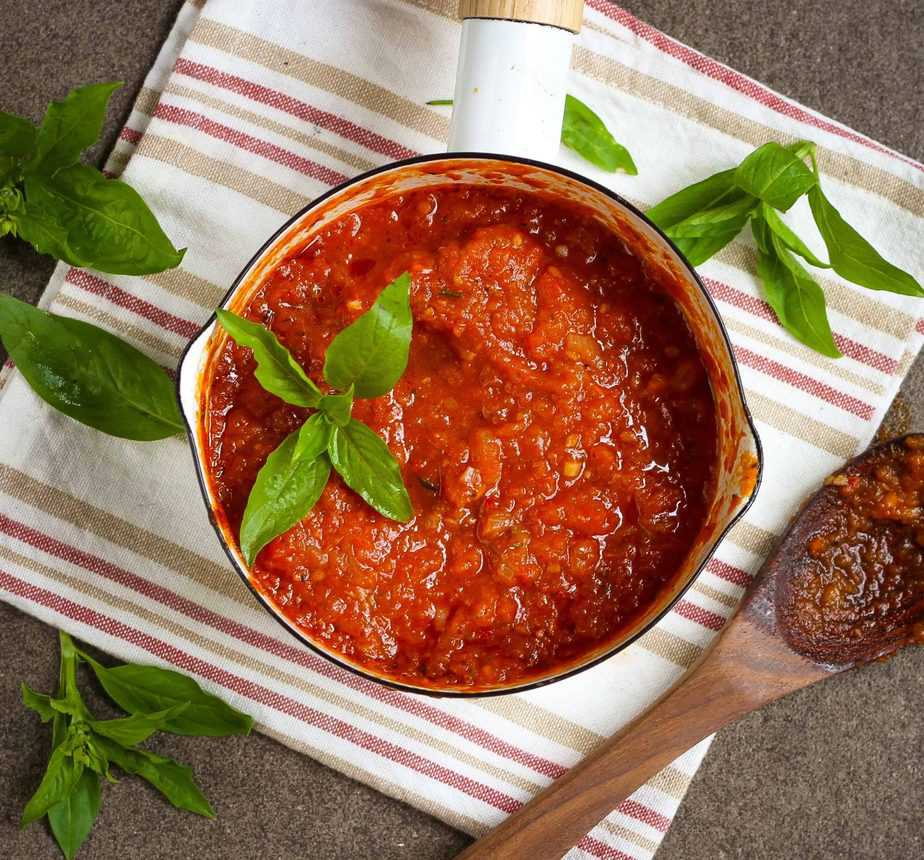In the culinary realm, few ingredients boast the versatility and popularity of the delectable tomato. Its vibrant hue and tangy flavor have made it a beloved staple in kitchens worldwide, inspiring countless easy recipes with tomato sauce that tantalize taste buds and ignite culinary creativity.
From classic pasta dishes to hearty soups and savory pizzas, tomato sauce serves as a culinary canvas, allowing home cooks and seasoned chefs alike to experiment with flavors, textures, and aromas. In this comprehensive guide, we delve into the art of crafting easy recipes with tomato sauce, empowering you to create mouthwatering dishes that will impress your family, friends, and fellow foodies.
Overview of Easy Recipes with Tomato Sauce
Tomato sauce is a versatile and delicious ingredient that can be used in a variety of dishes. It is made from tomatoes, onions, garlic, and herbs, and can be seasoned to taste. Tomato sauce is a popular choice for pasta dishes, but it can also be used as a topping for pizzas, casseroles, and other dishes.There
are many different types of tomato sauces, each with its own unique flavor. Some of the most popular types of tomato sauces include:* Marinara sauce: A simple tomato sauce made with tomatoes, onions, garlic, and basil.
Arrabiata sauce
A spicy tomato sauce made with tomatoes, onions, garlic, and chili peppers.
Puttanesca sauce
A tomato sauce made with tomatoes, onions, garlic, capers, and olives.
Bolognese sauce
A meaty tomato sauce made with tomatoes, onions, garlic, ground beef, and pork.When choosing tomatoes for tomato sauce, it is important to select ripe, flavorful tomatoes. The best tomatoes for sauce are those that are in season and have a deep red color.
Avoid using tomatoes that are bruised or damaged.
Essential Ingredients and Equipment

Creating a flavorful and versatile tomato sauce requires a combination of essential ingredients and the right equipment. Understanding the role of each ingredient and using the appropriate tools will enhance the taste and texture of the sauce.
Essential Ingredients
- Tomatoes: The foundation of the sauce, providing a rich, tangy flavor. Use ripe, fresh tomatoes for optimal taste.
- Onion: Adds sweetness and depth of flavor. Use yellow or white onions for a milder taste, or red onions for a more robust flavor.
- Garlic: Imparts a savory and aromatic note. Use fresh garlic cloves for the best results.
- Olive oil: Helps sauté the vegetables and creates a smooth base for the sauce.
- Seasonings: Salt, pepper, and herbs like basil, oregano, and thyme enhance the flavor and complexity of the sauce.
Equipment
- Large pot or Dutch oven: Provides ample space for the sauce to simmer and reduce.
- Immersion blender: Purees the sauce to create a smooth and velvety texture.
- Wooden spoon: For stirring and preventing the sauce from sticking to the bottom of the pot.
- Measuring cups and spoons: For precise measurement of ingredients.
Step-by-Step s
Creating a delectable tomato sauce is a culinary endeavor that can elevate any dish. Whether you’re a seasoned chef or a novice in the kitchen, this detailed guide will empower you to craft a flavorful and versatile sauce that will tantalize your taste buds.
The process of making a basic tomato sauce is straightforward and requires minimal ingredients. However, by experimenting with different variations, you can tailor the sauce to your personal preferences and culinary creations.
Ingredients
- 2 tablespoons olive oil
- 1 onion, finely chopped
- 2 cloves garlic, minced
- 28 ounces crushed tomatoes
- 1/2 cup water
- 1 teaspoon dried oregano
- 1 teaspoon dried basil
- Salt and pepper to taste
s
1.
-
-*Prepare the ingredients
Gather all the necessary ingredients and ensure they are prepped according to the instructions above.
- 2.
- 3.
- 4.
- 5.
- 6.
- 7.
-*Heat the oil
Pour the olive oil into a large saucepan or pot over medium heat. Allow the oil to shimmer before adding the chopped onion.
-*Sauté the onion
Cook the onion until it becomes translucent and slightly caramelized, about 5 minutes. Stir occasionally to prevent burning.
-*Add the garlic
Once the onion is translucent, add the minced garlic and sauté for another minute, or until fragrant.
-*Pour in the tomatoes
Carefully pour the crushed tomatoes into the saucepan and stir to combine.
-*Season and simmer
Add the water, oregano, basil, salt, and pepper. Bring the mixture to a boil, then reduce heat to low and simmer for at least 30 minutes, or until the sauce has thickened to your desired consistency. Stir occasionally to prevent sticking.
-*Taste and adjust
Once the sauce has simmered, taste it and adjust the seasonings as needed. Add more salt, pepper, or herbs until it meets your preferences.
Variations
The basic tomato sauce recipe can be easily customized to create a variety of flavors and textures.
Here are a few popular variations:
- Spicy Tomato Sauce: Add 1/4 teaspoon of red pepper flakes or a pinch of cayenne pepper to the sauce while it simmers.
- Roasted Tomato Sauce: Roast the tomatoes in the oven before adding them to the sauce. This will give the sauce a deeper, richer flavor.
- Herbed Tomato Sauce: Add a variety of fresh herbs to the sauce, such as thyme, rosemary, or marjoram.
- Creamy Tomato Sauce: Stir in 1/2 cup of heavy cream to the sauce after it has simmered. This will create a smooth, velvety texture.
Tips and Techniques
Mastering the art of tomato sauce requires a combination of practical tips and culinary techniques. These techniques will elevate your sauce to new heights, ensuring a flavorful and delicious outcome every time.
Thickening the Sauce
- Simmer: Allow the sauce to simmer gently over low heat for an extended period. This allows the natural sugars in the tomatoes to caramelize, resulting in a thicker consistency.
- Reduce: Bring the sauce to a boil and then reduce the heat to low. Let it simmer until the sauce has reduced by about half its original volume, resulting in a thicker and more concentrated flavor.
- Add cornstarch: Mix 1 tablespoon of cornstarch with 2 tablespoons of water to form a slurry. Whisk the slurry into the simmering sauce and cook until thickened.
Adding Depth of Flavor
- Sauté aromatics: Start by sautéing onions, garlic, and herbs in olive oil to create a flavorful base for your sauce.
- Add umami ingredients: Incorporate ingredients like mushrooms, anchovies, or Parmesan cheese to enhance the savory depth of the sauce.
- Use high-quality tomatoes: Choose ripe, flavorful tomatoes for the best possible taste. Canned whole tomatoes are a convenient option, but fresh tomatoes will yield the most vibrant flavor.
Balancing Acidity
- Add a touch of sweetness: A pinch of sugar or a spoonful of honey can help balance the acidity of the tomatoes.
- Use dairy: Stirring in a splash of cream or milk can add richness and help neutralize the acidity.
- Simmer with baking soda: A small pinch of baking soda can neutralize some of the acid in the tomatoes, resulting in a more mellow flavor.
Troubleshooting Common Problems
- Sauce is too watery: Thicken the sauce using one of the methods described above.
- Sauce is too thick: Add a little water or broth to thin it out.
- Sauce is too acidic: Balance the acidity with sweetness, dairy, or baking soda.
- Sauce is bland: Enhance the flavor with additional aromatics, umami ingredients, or herbs.
Variations and Adaptations
The versatility of tomato sauce knows no bounds. It can be easily customized to suit your taste preferences and the dish you’re preparing.
Explore the endless possibilities by incorporating various vegetables, herbs, and spices into your sauce. For a vibrant and flavorful twist, add chopped bell peppers, zucchini, or mushrooms. Enhance the aroma with fresh basil, oregano, or thyme. A pinch of red pepper flakes or a dash of cayenne will add a touch of heat.
Adapting the Sauce
Tomato sauce is not limited to pasta alone. Its versatility extends to a wide range of dishes, each requiring slight adaptations.
- Pasta: Use a smooth, velvety sauce that effortlessly coats the noodles.
- Pizza: Opt for a thicker sauce with a robust flavor that can withstand the heat of the oven.
- Soups: Create a flavorful broth by simmering the sauce with vegetable or chicken stock.
Creative Uses
Don’t let leftover tomato sauce go to waste. Get creative and find innovative ways to use it:
- Spread: Slather it on sandwiches or wraps for a tangy and flavorful addition.
- Dip: Serve it alongside appetizers like mozzarella sticks or fried zucchini.
- Marinade: Use it to marinate chicken or tofu for a flavorful and juicy result.
Pairing and Serving Suggestions
Tomato sauce’s versatility extends beyond its compatibility with pasta. It pairs harmoniously with an array of dishes and ingredients.
Complementary Side Dishes and Accompaniments:
- Roasted or steamed vegetables, such as broccoli, zucchini, or carrots, provide a vibrant and nutritious contrast to the richness of tomato sauce.
- Grilled or pan-fried meats, such as chicken, steak, or fish, add a savory element to balance the acidity of the sauce.
- Fresh salads, with their crisp texture and light flavors, offer a refreshing accompaniment to tomato sauce.
- Garlic bread or crusty bread serves as an excellent vessel for soaking up the delectable sauce.
Garnishes and Presentation Ideas:
- Freshly grated Parmesan cheese adds a nutty and salty touch.
- Chopped basil or oregano provides a burst of herbal freshness.
- A drizzle of olive oil enhances the sauce’s richness and adds a touch of elegance.
- Serve tomato sauce in a heated dish to maintain its warmth and enhance its flavors.
Conclusion

As you embark on your culinary adventures with tomato sauce, remember that the possibilities are endless. Experiment with different ingredients, techniques, and variations to create your signature dishes that reflect your unique palate. Whether you prefer a classic marinara or a bold and spicy arrabbiata, the world of tomato sauce awaits your exploration.
So gather your ingredients, ignite your culinary passion, and let the flavors dance on your plate!
Q&A
What are the essential ingredients for a basic tomato sauce?
The foundation of a flavorful tomato sauce lies in ripe tomatoes, aromatic onions, fragrant garlic, and a touch of olive oil. These ingredients provide the base for a versatile sauce that can be customized to your liking.
How can I thicken my tomato sauce?
To achieve a thicker consistency, simmer your sauce for a longer duration, allowing the excess moisture to evaporate. Alternatively, you can add a cornstarch or flour slurry to the sauce while stirring constantly.
What are some creative ways to use leftover tomato sauce?
Transform your leftover tomato sauce into a flavorful spread for sandwiches or wraps. Use it as a base for hearty soups or stews. Alternatively, freeze the sauce in portions for future use, ensuring you always have a culinary treasure on hand.
